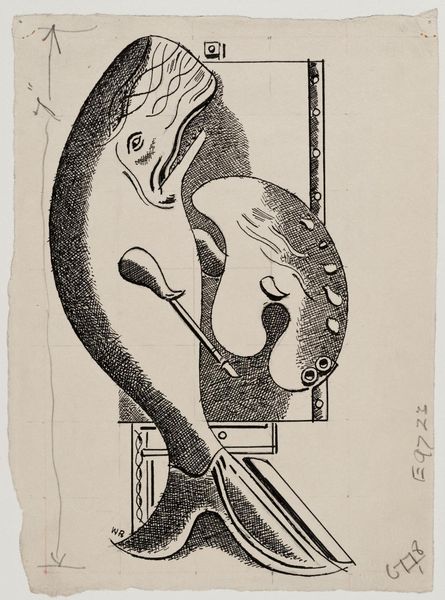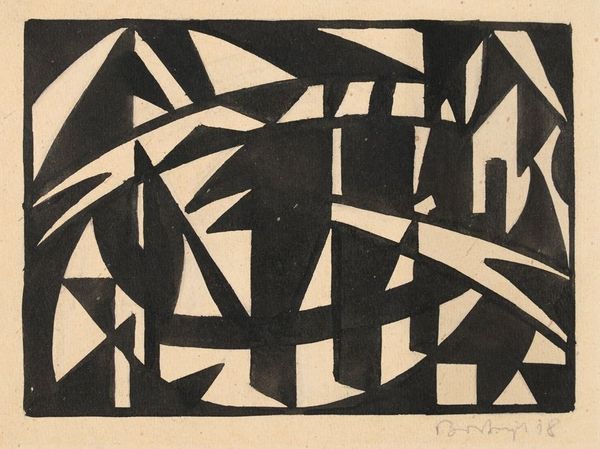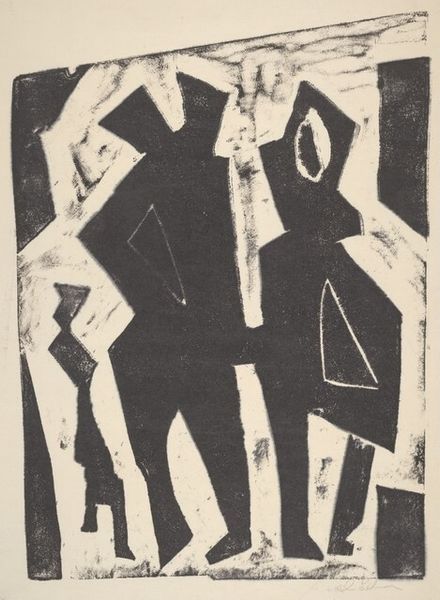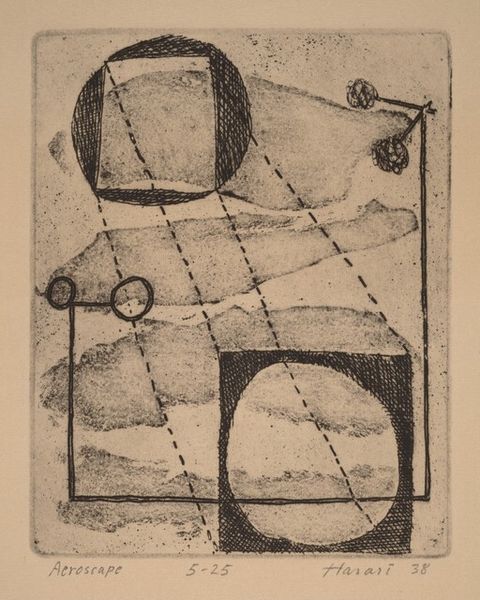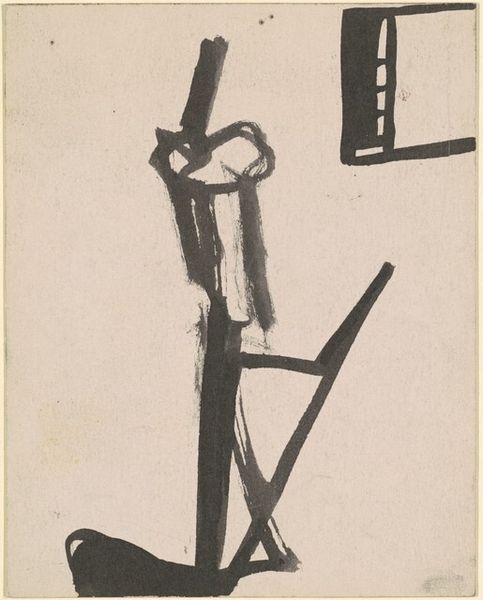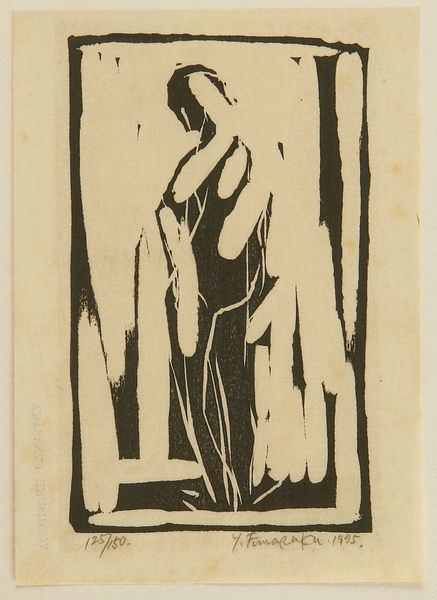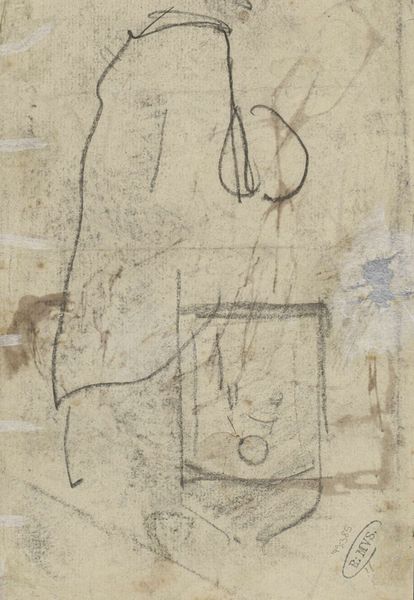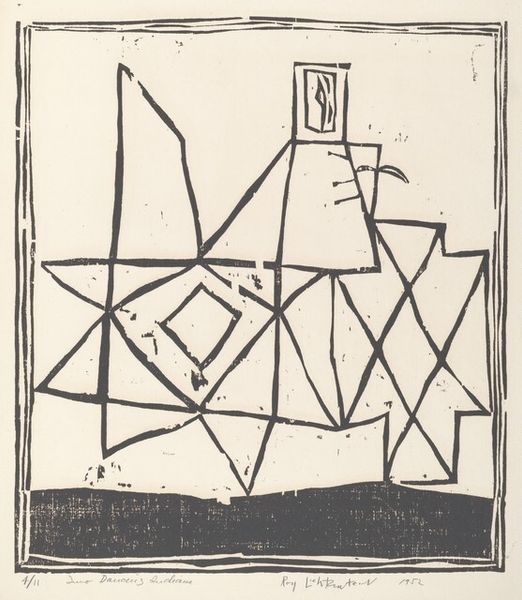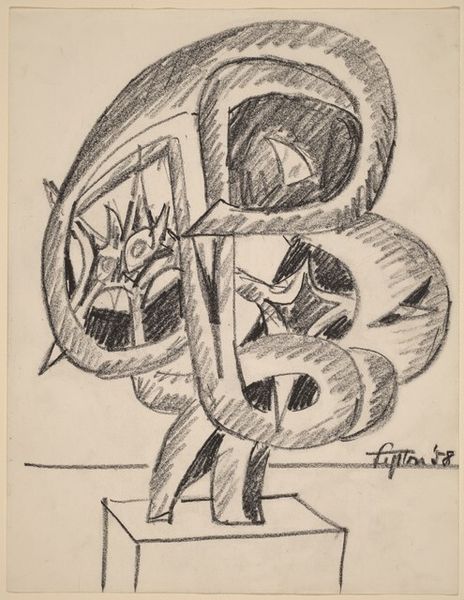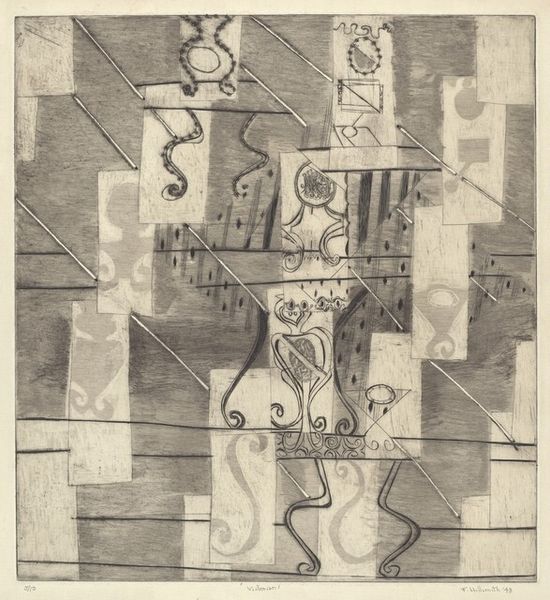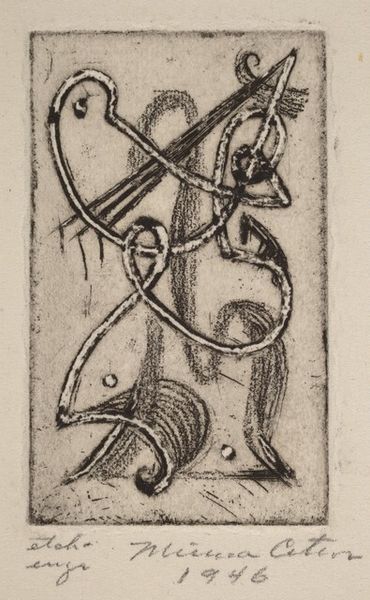
print, ink, woodcut
#
portrait
# print
#
german-expressionism
#
figuration
#
ink
#
expressionism
#
woodcut
#
abstraction
Dimensions: image: 12.3 x 8.7 cm (4 13/16 x 3 7/16 in.) sheet: 35.5 x 24.7 cm (14 x 9 3/4 in.)
Copyright: National Gallery of Art: CC0 1.0
Editor: We are looking at Hans Haffenrichter's "Seated Woman," a woodcut in ink created sometime between 1923 and 1926. The sharp contrasts immediately draw the eye. What elements do you think contribute most to this print's impact? Curator: The choice of woodcut itself is significant. This labor-intensive process emphasizes the artist's hand, directly linking the final image to the physical act of creation. Notice the stark blacks and whites – a consequence of the medium – that highlight the simplified, almost geometric forms. It is challenging the traditional ideas of high art, bringing the methods of manual labor into play. What's your take on its link to German Expressionism? Editor: It feels incredibly direct, even raw, reflecting a certain emotional intensity common to the movement. Do you think the abstraction serves a specific purpose? Curator: Absolutely. The abstraction distances the figure from idealized representation, focusing instead on the material process that makes the artwork visible. Consider how the bold cuts in the wood dictate the composition, prioritizing the making of the print rather than mimetic accuracy. It almost critiques the very act of image production within a rapidly industrializing society, wouldn't you say? Editor: That’s interesting. I hadn't thought of it as a commentary on industrialization, but it makes sense given the medium. I initially saw only an abstracted figure study, but it is the labor that defines the art piece. Curator: Precisely! By focusing on materiality and its inherent politics, Haffenrichter moves the dialogue beyond simple aesthetics to questions of production and value. Seeing this shifts one's perceptions of the artwork's cultural meaning. Editor: Thank you for that fascinating perspective! It gives me a lot to think about regarding materiality and its role in art historical interpretation.
Comments
No comments
Be the first to comment and join the conversation on the ultimate creative platform.
